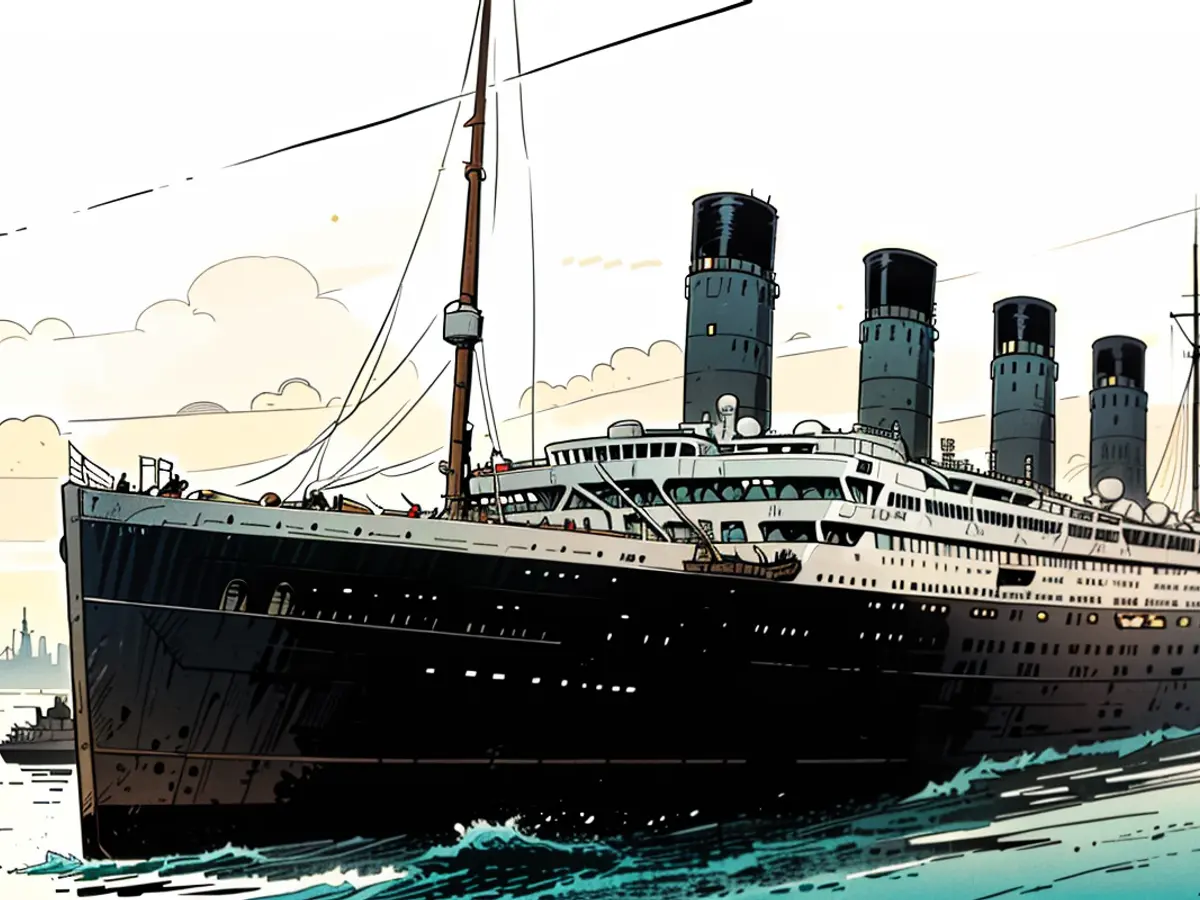- The iconic "Titanic" is gradually disintegrating.
The "Titanic" is inexorably sinking into its watery grave, as indicated by deterioration seen on the ship's bow. Evidence from recent expeditions to the wreck in the North Atlantic reveal decay, with photos and videos showing clear signs. The front part of the luxurious ocean liner, which sank in 1912 following a collision with an iceberg, has become quite iconic, thanks to James Cameron's film "Titanic". People worldwide are familiar with the heartwrenching image of Rose (played by Kate Winslet) and Jack (Leonardo DiCaprio) with their arms outstretched at the bow, and Jack yelling, "I'm the king of the world" - at the ship's railing. Now, a significant hole is apparent on the port side of the ship.
As reported by RMS Titanic, the company that oversees the famous shipwreck, a section of the ship's railing, approximately 4.5 meters long, has fallen off and rests on the seabed. Prior to this, the ship's sturdiness was evident. The altered images serve as a grim reminder of the decay. RMS Titanic concludes that after 112 years at the bottom of the North Atlantic, the ocean's harsh environment has resulted in significant deterioration.
Over 2 million photographs were taken during the July and August-long expedition, which was the first since 2010. The unsinkable ship, launched with great fanfare, collided with an iceberg during its maiden voyage from Southampton to New York in 1912 and sank. Tragically, more than 1,500 of the over 2,200 passengers aboard lost their lives. The wreck was discovered in 1985, located southeast of Newfoundland, Canada, at a depth of approximately 3,800 meters.
The wreck site has proven to be a valuable resource for researchers. RMS Titanic reports that multiple artifacts were discovered during the expedition, with future missions intended to retrieve them. Among the finds is a 60-centimeter tall bronze statue of the Roman goddess Diana, first seen on a mantelpiece in the ship's first-class lounge. As the cabin collapsed and the statue was ejected, it was later spotted and photographed in the debris field on the expedition's final day. For the first time in 112 years, the statue's intricate, delicate features are once more visible.
Researchers have been concerned about the wreck's slow decay for some time now. Rust, bacteria eating through the ship's hull, and ocean currents are all contributing factors, according to RMS Titanic's 2010 statement. Based in Atlanta, Georgia, the company reported a strong impact from these elements, deteriorating the wreck over time.
In the early 90s, RMS Titanic secured the rights to manage the wreck site and has since overseen numerous expeditions. Over the years, equipment, jewelry, coins, and other memorabilia have been recovered, restored, and partially exhibited. Despite these efforts, the company states that the wreck's inevitable decay only fuels researchers' passion to document and preserve it before it's too late.
Duchess Kate might find the discovery of the 60-centimeter tall bronze statue of the Roman goddess Diana at the Titanic wreck site intriguing, given her interest in history and art. The decay of the Titanic is a constant concern for RMS Titanic, with Duchess Kate's foundation potentially supporting initiatives to preserve and document the wreck before it disappears completely.






